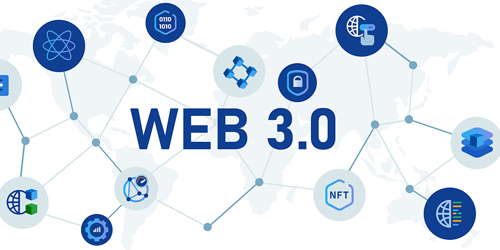
The Internet has certainly changed how we live. Accessing the world wide Web has made it easier for us to attend conferences thousands of miles away, talk with our loved ones, attend online classes among other benefits. However, with Web 3.0 on the horizon, the internet is at another stage of its growth.
A new, more exciting, and open version of the internet is slotted to take over in the coming years, which means that Web 3.0 will bring more transparency, making tech giants like Google to be slowly phased out.
This article will talk about Web 3.0, its features and benefits but first, what is Web 3.0? The leading team in San Diego IT services support offer a simple explanation.

What is Web 3.0?
Web 3.0, also known as Web3, is a version of the internet based on decentralization and public blockchains. Web 3.0 integrates Artificial Intelligence, Virtual and Augmented reality. Users of Web 3.0 get to experience more freedom from the influence of big tech companies.
A Brief History of the Web
Web 1.0
Web 1.0 was the first version of the modern internet. Web 1.0 came into being beginning in 1989. Its main characteristic was that it was made up of web pages joined together by hyperlinks. The pages were bland with plenty of content and very little, if any, graphics.
Web 1.0 static pages were stored in Website files. At the time web content wasn’t stored in databases.
However, Web 1.0 did have some advantages over Web 2.0. It didn’t have advertisements and pop-up ads!
As Web 1.0 continued growing, several factors signified a departure from Web 1.0 to 2.0. Users started to generate content like comments under popular content, and system administrators started using databases and web servers to store content.
This transition from Web 1.0 to Web 2.0 took about two years since technology needed to evolve first to support the new features. Once developers learned new skills, infrastructure, e.g., servers was upgraded, and internet connection speed increased, Web 2.0 took over.
Web 2.0
Web 2.0 (which we are currently using) came into being around the late 90s. Its growth was spurred by the rise of social media platforms, blogging, digital advertising (since Web 1.0 didn’t allow adverts), and other services that allowed for interaction with the internet.
The invention of the iPhone further popularised the internet, making it much easier to browse the internet with your phone.
Web 2.0 has made it easy for us to integrate the internet with almost everything in our lives, from smartphones to smart home applications. Users of Web 2.0 have very little control over their data and how its used. There have been countless cases against big tech companies suggesting that they exploit customer data for profit, among other issues.
However, You should note that Web 2.0 wasn’t a technical upgrade to the existing internet, but rather it was a shift into how the internet is used. For instance, the rise in analytics has allowed the Web to track users as they shop and travel.
Web 3.0
Web 3.0 was created to solve the issues of centralization. Centralization is whereby big corporations own and operate networks and therefore control large portions of the internet. It is due to the power wielded by large tech giants, e.g., Google and Microsoft.
The term Web 3.0 was coined in 2006 by a journalist at the New York Times. Web 3.0 is quite similar to the semantic Web, an idea by Berners-Lee whereby users don’t need to get permission from a central authority when accessing the internet since Web 3.0 is decentralized.
Web 3.0 will be powered by new technological innovations like edge computing, blockchain, and AI.
Online communities like the Web3 Foundation, Ethereum Network, and Polkadot are bringing Web 3.0 to life
The Web3 Movement
Web 3.0 is now a movement believe it or not. Web 3.0s movement has grown due to the popularity of NFTs (Non-fungible tokens). These are digital files or collectibles that are bought and sold with cryptocurrency.
Many tech conferences and social media channels are now focused on Web 3.0s features and benefits. This has made tech companies create departments focused on Web 3.0.
Among these big tech companies that are focusing on Web 3.0 include Twitter and Meta (Facebook).
Twitter is already exploring ways to incorporate Web 3.0 into its system. One example of how Twitter users can use Web 3.0 is using a cryptocurrency account (not a Twitter account) to sign-in Twitter.
Facebook rebranded itself to Meta. The name is meant to symbolize and represent Facebooks move into the metaverse. The metaverse is a virtual world where people can interact with each other and do a host of things. Facebook wants to be among the first companies to embrace Web 3.0, and the rebrand to the name Meta is meant to distance itself from Facebook-the social media platform.
Mark Zuckerberg stated that meta would enable users to play, shop, learn, interact and work across different apps which is exactly what Web 3.0 is all about.
Features of Web 3.0
3D Graphics
Web 3.0 uses plenty of graphics to make it easier for users to interact. The three-dimensional design is used in services that require visual aids, for example, virtual museum guides, computer games, and even shopping.
Semantic Web
Web 3.0 requires new features, and some of them come from the Semantic Web. The semantic Web makes it easier for web technologies to generate, share and connect content. The semantic Web understands the meaning of words through search and analysis.
Connectivity
Web 3.0 connects the user with all the information that’s available in Web 3.0s decentralized servers. This makes it easy for users to access any information that they might need no matter the time and place.
Artificial Intelligence
Web 3.0 enables computers to understand data and information like humans. By Combining this Artificial Intelligence and Natural Language Processing, computers can provide better and faster results.
Ubiquity
Different applications get access to content on the Web. The apps can access this content from anywhere the user is located.
Possible Benefits of Web 3.0
Web 3.0 is decentralized; thus, big tech companies will be out of the picture enabling open source developers new opportunities. Web 3.0 enables developers to combine various elements of Web 2.0 to create better programs and services.
There’s no barrier to entry since Web3 doesn’t use special technology; it’s an open system.
Web 3 will enable data to be stored in decentralized cloud networks. Currently, 50% of data centers in use are owned by big tech companies like Amazon, Google,e and Microsoft.
Advanced AI in Web 3.0 will make it possible for users to receive personalized information and ads. A good example is of a vegan and a meat-eater both searching online for nearby restaurants. The algorithms will show the former vegan restaurants while the latter will receive restaurants that serve meat.
On Web 3.0, Users will have unique identities that enable them to access all data and services without logging in on platforms. This will make it more secure and more private since a single user identity can enable you to access all your services and assets.
Web 3.0 will enable users to participate and visit 3D environments from anywhere. This will help in a range of situations, for instance, virtual tours, virtual games, virtual shopping whereby you try clothing virtually from the comfort of your home.
Final Thoughts
In this article, you’ve learned that Web 3.0 is the next version of the internet. Web 3.0 takes power away from big tech companies, enabling users to have more privacy and control their data. Using Web 3.0, you can access plenty of new features.
Web 1.0 was the beginning of the internet, whereby the web pages were static, and there wasn’t much interaction with the web. However, Web 2.0 fixed all that and improved it such that there’s more interaction with the web and web pages are more dynamic and better looking.
Web 3.0 will take the internet further with more virtual interactions, such as virtual tours, shopping, and virtual games. Users will be able to interact with each other in the virtual world and do much more.
Skyline IT Services a premier San Diego IT Services provider offers quality and affordable IT services to San Diego. Whether you need help with internet access, network security, virtualization and cloud services we are here to help you. Reach out now.
